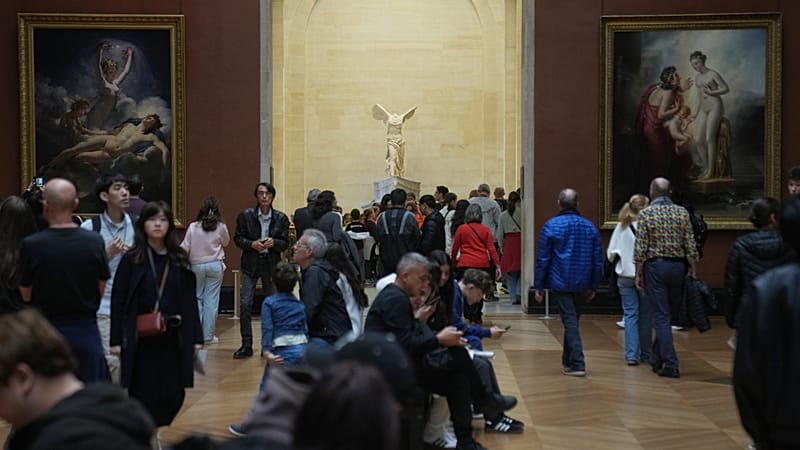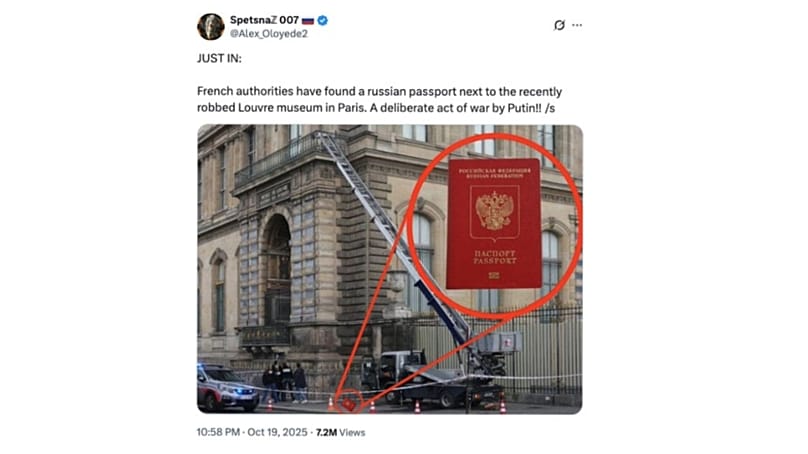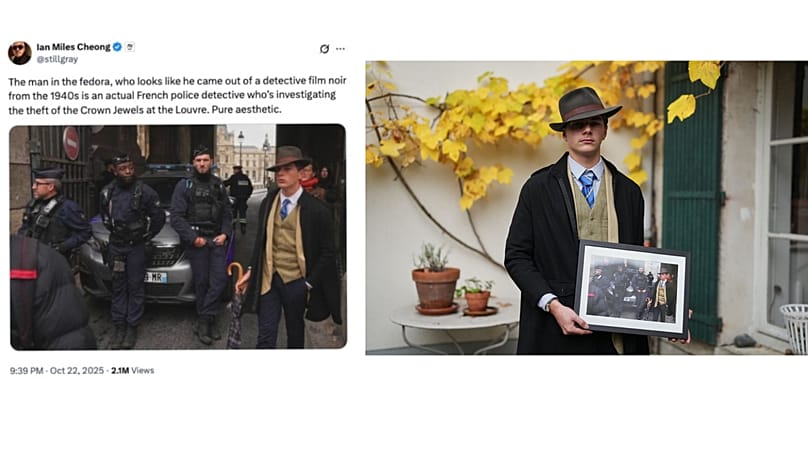Russian passports and listed jewels: How the internet went wild for fake news about the Louvre heist

It was the heist that shocked the French nation: on 19 October, a team of thieves brazenly broke into the Louvre Museum, stealing jewels worth approximately €88 million in broad daylight.
But as with every major news story, internet users took to social media platforms to comment and speculate on the burglary, while others used the opportunity to peddle disinformation and false allegations.
One narrative blamed Russian nationals for the heist, alleging that Russian passports had been discovered inside the museum following the incident, with one X post peddling this claim garnering more than 7 million views.
Euronews put allegations regarding a Russian passport to the Paris prosecutor's office, who stated that such suggestions were "completely fake".
Other social media users claimed that stolen jewellery, previously belonging to Queen Marie-Amélie, the last Queen of France, had been found for sale on a Russian website and directed X users to Telegram for more information.
However, Avito — the Russian advertising platform on which the listing was posted — responded to the online allegations by confirming that although listings for Queen Marie-Amélie's jewels had been posted, they were in fact part of a "prank".
"People with critical thinking skills understand that this is just a prank", stated Avito, adding that the "ad has been deleted, the 'pranksters' have been blocked."
The identities of the thieves have also been the subject of much speculation and misinformation.
Social media users relayed pictures of an alleged suspect**,** which went viral online, with many describing him as "good looking".
In reality, the man's picture was shared on "arrests.org", a website which shares mugshots of people arrested in different US states.
The man pictured in posts shared on social media is, in fact, called Stefan Dolbashian. He was arrested in 2010 for a burglary committed in the US state of Florida — and therefore has nothing to do with the Louvre heist. The 2010 charges against him were eventually dropped.
Dolbashian took to Instagram to laugh about the claims, stating "this is hilarious."
In reality, mugshots of the Louvre heist's suspects have not been released, and the investigation remains ongoing.
In another online frenzy, users shared images of a man bearing a fedora, who they claimed to be the detective working on the Louvre case, with some posts gaining more than 2 million views.
Although the individual may look like the archetype of a Sherlock Holmes-type detective, in fact, he was a passerby who had nothing to do with the case.
Pedro Elias Garzon Delvaux, aged 15, had come to visit the Louvre with his grandparents on 19 October, but had no idea that there had been a heist earlier that day.
When he realised an Associated Press photo of him had drawn millions of views, his first instinct was not to rush online and unmask himself, instead choosing to play with the world's suspense.
This led theories to swirl about the sharply dressed stranger in the "Fedora Man" shot —was he a detective, an insider, or even an AI fake?
In reality, none of the above.
The 15-year old told The Cube, Euronews' verification team, "I like to dress up in style, sometimes even when going to school. So, I am only a detective in the imagination of people commenting, but not with the police or anything."




